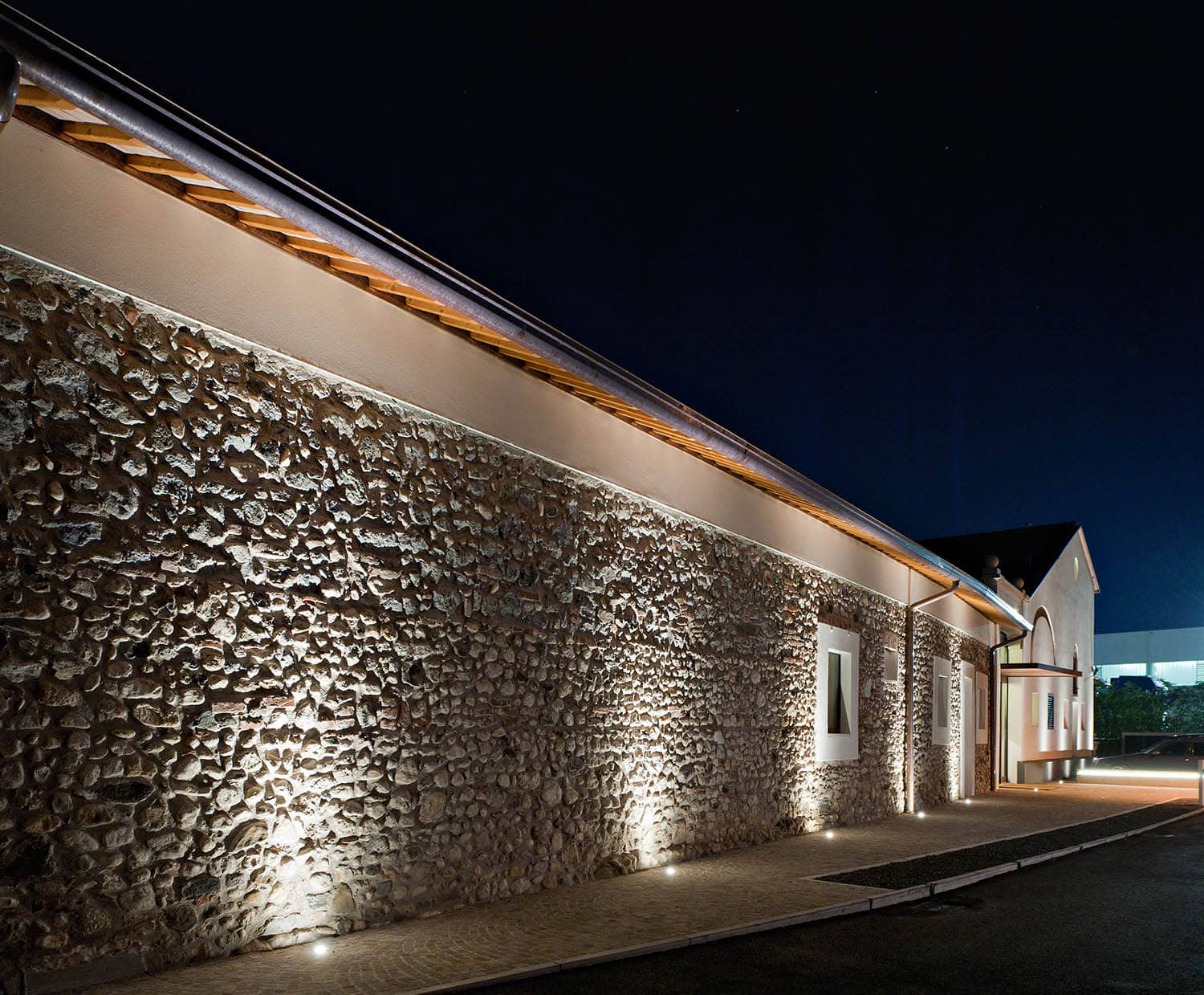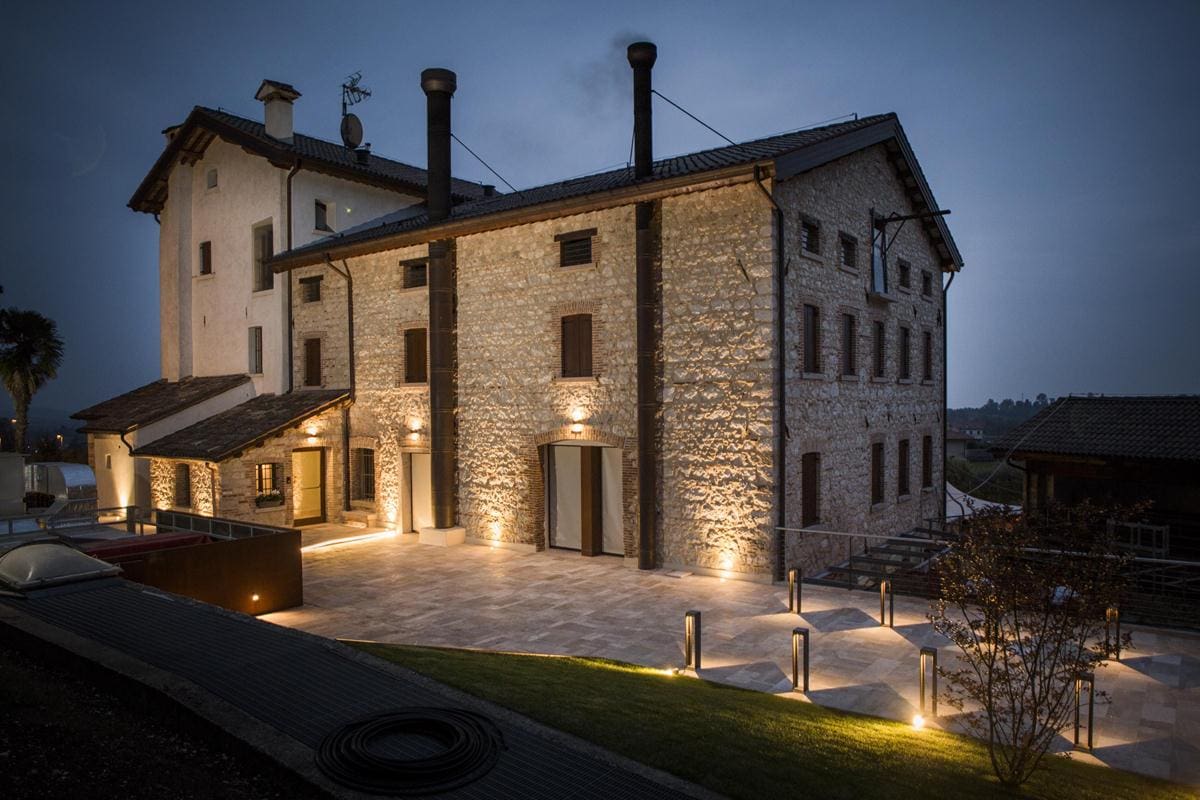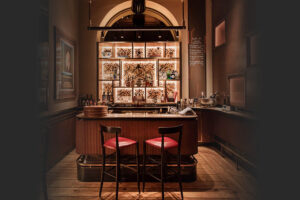Breaking news: if you too think that LED lighting fixtures can only be used to illuminate interiors the right way, unfortunately, you are off track.
And believe me, it’s not your fault. The idea that most people have about this kind of lighting is highly influenced by the image of huge LED cold light lamps stuck to the ceiling of dull and dreary offices inside harsh slab blocks reminiscent of the Soviet architecture.
Quite far from true.
I have already handled this subject in previous articles, but I want to make sure that the idea comes through nice and clear.
LED lights can be used for more than just interior lighting.
They are able to create warm and scenic effects outdoors as well, preserving the same benefits in terms of lifespan and power states.
Are you facing an outdoor stone wall and you don’t know where to begin to do it justice with the ideal lighting? Do you want to achieve a classy and refined effect, without having to give up practicality or to adopt complicated solutions?
Easily done.
In this article, I will provide you with some tricks from lighting professionals that will help you figure out how to illuminate your stone wall at best – as well as the main errors to avoid so you won’t ruin the natural beauty of the building.
1st trick for illuminating a stone wall – use light from the ground upwards
Honestly, this kind of LED lighting is my favourite for stone walls. There are two reasons why.
- It is the most evocative one. The light beam projected from the ground is able to create a more dramatic and interesting atmosphere than classic light diffused from above. Your building won’t go unnoticed and will be labeled as “fit for a design magazine” by all the neighbours.
- The original wall is NOT ruined by sconces of any kind. This way the stone keeps its natural look and preserves all the antique look that gives it personality.

The end result is always a success. Not only thanks to the atmosphere that is created, but also because the LED light illuminates the sub-roof which draws the perimeter of the building adding order and bringing out the finishes.
Today we have different types of recessed floor LED spotlights with an extremely low rate of energy consumption – only a few Watts -, specific optics for every requirement and very much improved visual comfort, unlike the blinding lights they were before.
But there’s more. The emitted heat is equal to zero. What does that mean? Your son will be able to walk barefoot safely on the spotlights without noticing even the slightest change in temperature. That goes for long LED linear light bar fixtures, as well.

Of course, you need to do a specific evaluation for each case, so you can make sure that the original features of the building are always respected and exploited. It’s happened a few times to find myself on worksites where the light points had already been determined. As you may see in the picture above.
In this particular case – a building converted into a hotel – it makes more sense to leave the wall sconces. In fact, they will help mark the entrance of each room, serving as a reference point for the guests who are not left groping around in the dark.
2nd trick for illuminating a stone wall – use light from above
Sometimes, projecting light towards the opposite direction turns out to be the best solution.
Look at the pictures of this restaurant owned by one of my clients. As you may notice, it wasn’t possible to work with just upward diffused light.
The gravel on the ground would have covered the spotlights as soon as a kid had approached them running wildly.
In addition to that, the structure/layout of the building was quite complex and not easy to illuminate.
The solution? LED spotlights with downward light projection.
All it took was to install on the sub-roof a few recessed spotlights and this majestic building was provided with the proper lighting, as well as a warm and cozy atmosphere.

4 lighting mistakes to avoid if you don’t want your stone wall to turn into the entrance of a creepy haunted house
1st mistake
Placing the spotlights on the ground right under the wall sconces is a colossal mistake, to say the least.
Think about it.
You are projecting the light upwards from under a wall fixture, which is 2 meters above and directs its light downwards.
It’s a real nonsense. And what is the end result?
Two light beams meeting in the middle and creating a shadow on the wall which cancels the effects of a light cone from the recessed floor spotlight.
You made twice the effort to obtain poor aesthetics and a great waste of light.
2nd mistake
Illuminating the rainwater pipes.
Maybe your house has an elegant facade and distinctive exposed brick pillars.
What would you do?
You decide to install a lighting system with recessed floor LED spotlights and you place them right in front of the pillars. So far, so good.
At some point, you realize that the light beams are directing all the focus towards the drain pipes, an element which you most certainly DON’T want to highlight and which draws the attention away from the architectural details.
As you may imagine, this is another error you should avoid.
3rd mistake
Using upwards directed light sources without an extruded element or a roof which can reflect the light, preventing it from proceeding towards the sky and going to waste. Or, even worse, without taking into account the current regulations against light pollution.
Let me make an example related to the area where I live. I live on a hill, about 30 minutes from Asiago, where the Astronomical Observatory is located.
In the surrounding territory, this kind of lighting is essentially non-existent because it disturbs the observation of the stars and the legislative authorities are very sensitive to light pollution.
Always remember to consider two main aspects before you start an outdoor lighting design for a stone wall with upward light diffusion:
- The presence of a roof, an extruded element or any kind of ceiling that may reflect the light and stop it from getting lost in the sky.
- The current laws on light pollution, both to avoid fines and to make sure you install a lighting system which is entirely up to code from the beginning.
4th mistake
One more thing to consider when you think of the lighting design for a stone wall is not as much the intensity of the light, as its colour and the width of the light beam.
If you need to illuminate a classic stone wall – where the colour of the stone is close to brown/beige – then a 3000 K warm light is definitely more adequate than cold light.
On the other hand, if the stone is black and you use 3000 K warm light, you will notice a yellow shade which is not particularly refined.
This type of stone requires in fact a slightly colder and more natural light, around 4000 K.
As far as the width of the light beam is concerned, if you have to illuminate a pillar, you will need a narrow light beam so that a vertical light line is designed.
However, for a large wall the light beam will be wider in order to cover more surface – and ideally with wall-washer optics and asymmetric light intensity distribution only towards the wall.
Now that I have provided you with these ideas for the proper lighting of a stone wall, I am sure you will hardly make mistakes like these again.
The correct lighting for your building is not only a matter of savings. There’s much more.
A facade which is decorated with rightly placed light sources – in a subtle and discreet way – creates a warm and elegant atmosphere. Your project and your home will look like they are ready to be featured in a design magazine.
Don’t miss out on the opportunity to have a front page facade!
→Click here and fill out the form to create a lighting design which can do justice to your facade with a warm and cozy atmosphere.



